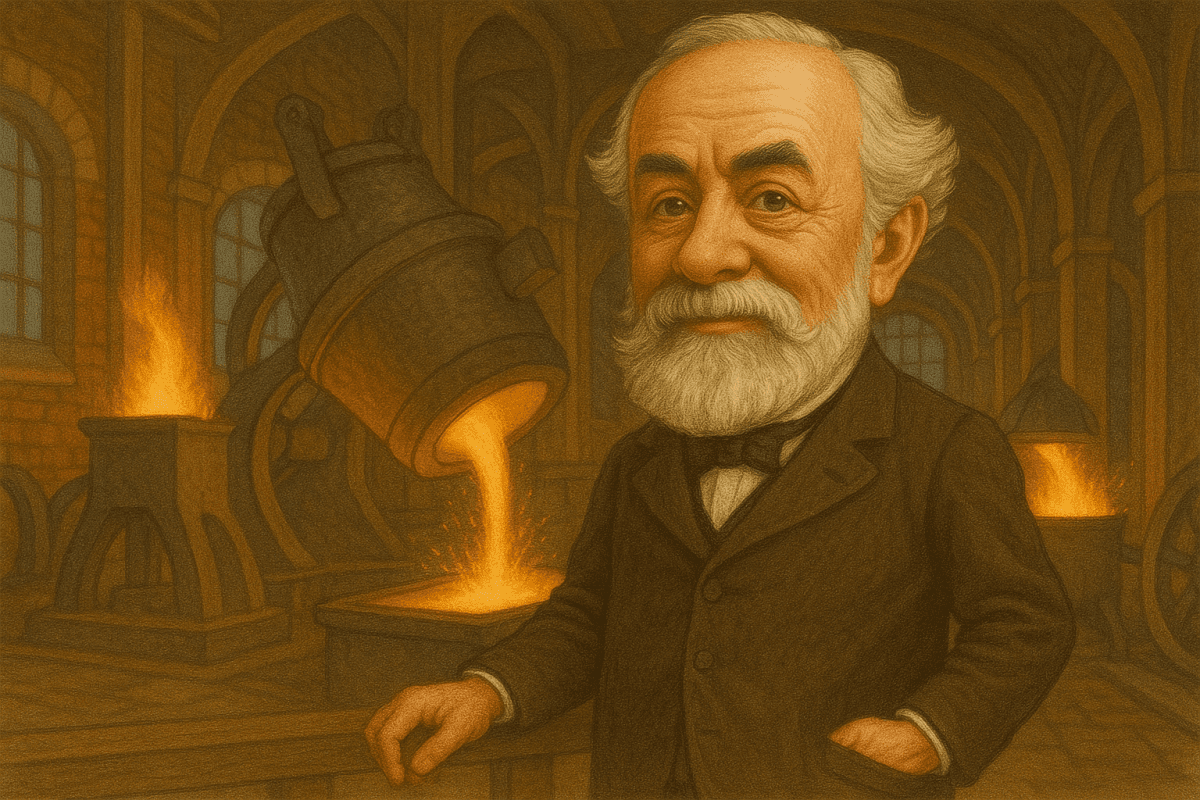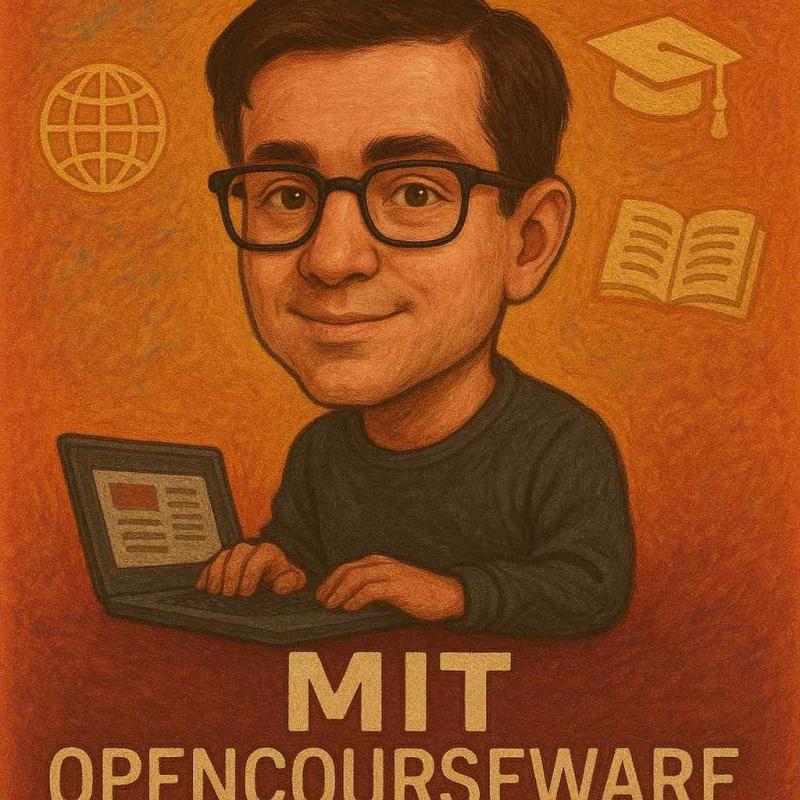The Steel Whisperer: How Henry Bessemer Revolutionized Modern Industry
Ever wondered who's responsible for those skyscrapers dominating our cityscapes? Or the railroads connecting cities? Or even that car sitting in your garage? While many brilliant minds contributed to these innovations, one man's discovery fundamentally changed everything: Henry Bessemer.
This 19th-century inventor didn't just improve steel production—he completely revolutionized it with his Bessemer process, making steel both affordable and abundant practically overnight.
Let's dive into the story of how this brilliant (and ridiculously wealthy) inventor transformed our world through his determination to solve what seemed like an impossible problem.
The Man Before the Steel
Born in 1813 in England, Henry Bessemer wasn't exactly born with a silver spoon—more like an inventive mind and a father who worked in metallurgy. While many successful people of his era had formal education or apprenticeships with industry leaders, Bessemer was largely self-taught. Which, honestly, makes his later achievements even more impressive!
Before becoming the steel king, Bessemer had already proven himself as an inventor with a knack for solving problems. He'd created improvements for typesetting machines, designed a method to manufacture bronze powder, and even developed a sugar extraction system. The guy couldn't stop inventing if he tried.
But it was a completely different problem that led him down the path to his most famous innovation. And ironically, it had nothing to do with steel initially.
The Cannon Problem
During the Crimean War in the 1850s, Bessemer became interested in improving artillery. He designed a new type of projectile but quickly realized something frustrating: the cast iron cannons of the day couldn't handle the pressure of firing his improved shells without breaking apart.
Can you imagine inventing something awesome only to discover it's too awesome for existing technology? Talk about a buzzkill.
What Bessemer needed was stronger metal for cannons. Iron was too brittle, and while steel would be perfect, it was prohibitively expensive—produced in small batches through tedious methods that had barely changed for centuries.
So instead of abandoning his cannon idea, Bessemer did what geniuses do: he decided to fix the underlying problem by figuring out how to make steel affordable. NBD, right?
The Breakthrough: The Bessemer Process
After countless experiments (and probably a fair amount of cursing), Bessemer had his eureka moment around 1856. He discovered that by blowing air through molten pig iron, the oxygen would react with the impurities—primarily carbon, silicon, and manganese—causing them to oxidize and separate from the iron.
The genius part? This oxidation process actually generated tremendous heat, making the reaction self-sustaining. No additional fuel needed! The process removed the impurities in minutes rather than days, turning pig iron into steel rapidly and at a fraction of the traditional cost.
When Bessemer first presented his findings to the British Association, some metallurgists literally laughed at him. Can you believe it? "Steel made in minutes instead of days? At a tenth of the cost? Sure, buddy." The skepticism was real.
But Bessemer had the last laugh. He patented his process in 1856 and built his own steel factory when established manufacturers wouldn't adopt his method. Classic entrepreneur move.
The Economic Revolution
The numbers don't lie—and Bessemer's impact was staggering:
• Before his process, steel cost around £50-60 per ton
• After implementation, prices dropped to about £6-7 per ton
• Steel production in Britain jumped from 49,000 tons in 1850 to 1.3 million tons by 1880
• The cost reduction was approximately 80-90%, making steel a practical material for mass use
This wasn't just a minor improvement—it was a complete economic transformation. Suddenly, steel was cheaper than wrought iron but significantly stronger and more versatile. Industries that had relied on wood, stone, or iron quickly converted to steel.
Building the Modern World
With affordable steel now available in massive quantities, the second half of the 19th century saw an explosion of development:
• Railways expanded dramatically, with stronger steel tracks replacing iron ones
• Ship construction evolved from wooden hulls to steel, enabling larger, more durable vessels
• Skyscrapers became possible since steel frames could support taller structures than ever before
• Bridges could span greater distances with stronger support systems
• Mass production of machinery, tools, and eventually automobiles became feasible
IMO, the modern world as we know it wouldn't exist without Bessemer's contribution. Just look around—steel is everywhere. That skyline? The highway you drive on? The appliances in your kitchen? All made possible or more affordable because of one man's determination to solve a seemingly impossible problem.
The Steel Empire
Unlike many inventors who died penniless while others profited from their ideas, Bessemer was savvy about protecting and monetizing his innovation. He:
• Established his own steel company when existing manufacturers rejected his process
• Enforced his patents vigorously against infringement
• Continuously improved his process to maintain his technological edge
• Eventually sold licenses to manufacturers who initially mocked him
By the time he died in 1898, Bessemer had amassed a fortune equivalent to hundreds of millions in today's money. Not bad for a self-taught inventor, right? He was knighted by Queen Victoria in 1879, recognizing his enormous contribution to Britain's industrial might.
The Legacy Beyond Steel
Bessemer's approach to innovation offers valuable lessons even today:
• He identified an existing problem rather than creating a solution looking for a problem
• When faced with industry resistance, he backed himself by creating his own company
• He combined scientific understanding with practical engineering
• He continuously improved his process rather than resting on initial success
The Bessemer process remained the dominant steel-making method until the 1950s when it was gradually replaced by newer oxygen furnace technologies—which, ironically, built upon the principles Bessemer had established a century earlier.
Steel Yourself for This Conclusion
Henry Bessemer didn't just create a more efficient manufacturing process—he fundamentally changed the material foundation of our civilization. From transportation to construction, from medicine to energy, steel made everything stronger, lighter, more durable, and critically, more affordable.
What's particularly impressive is that his breakthrough came from lateral thinking: starting with artillery shells and ending with revolutionizing metallurgy. It's a reminder that sometimes the biggest innovations come from tackling adjacent problems rather than direct ones.
So next time you see a skyscraper or cross a bridge, give a little nod to Henry Bessemer—the man who quite literally gave us the backbone of the modern world. Not a bad legacy for a self-taught tinkerer, huh? :)



